Geology Reference
In-Depth Information
(a)
Scree/Boulders
Colluvium
Bedrock
>40°
30-40°
15°
(b)
3°
(c)
5°
10°
hillslope tor
20-30°
(d)
5-7°
5-8°
2-3°
>40°
(e)
2-5°
3-6°
>0
3-5°
1-3°
Figure 9.1.
Typical slope forms found in present-day periglacial environments. (a) free-face (King
model) slope, (b) rectilinear debris-mantled (Richter) slope, (c) convexo-concavo debris-mantled
slope, (d) stepped (terraced) profi le, and (e) pediment-like form.
9.2.1. The Free-Face Model
Probably the best-known slope form is one composed of a vertical or near-vertical rockwall
below which is, fi rst, a talus, or scree slope and, second, a footslope, or basal complex.
This morphology is similar to the “standard” hillslope described by L. C. King (1953), in
which there is a crest (waxing slope), a scarp (free-face), a debris slope (constant slope),
and a pediment (waning slope).







